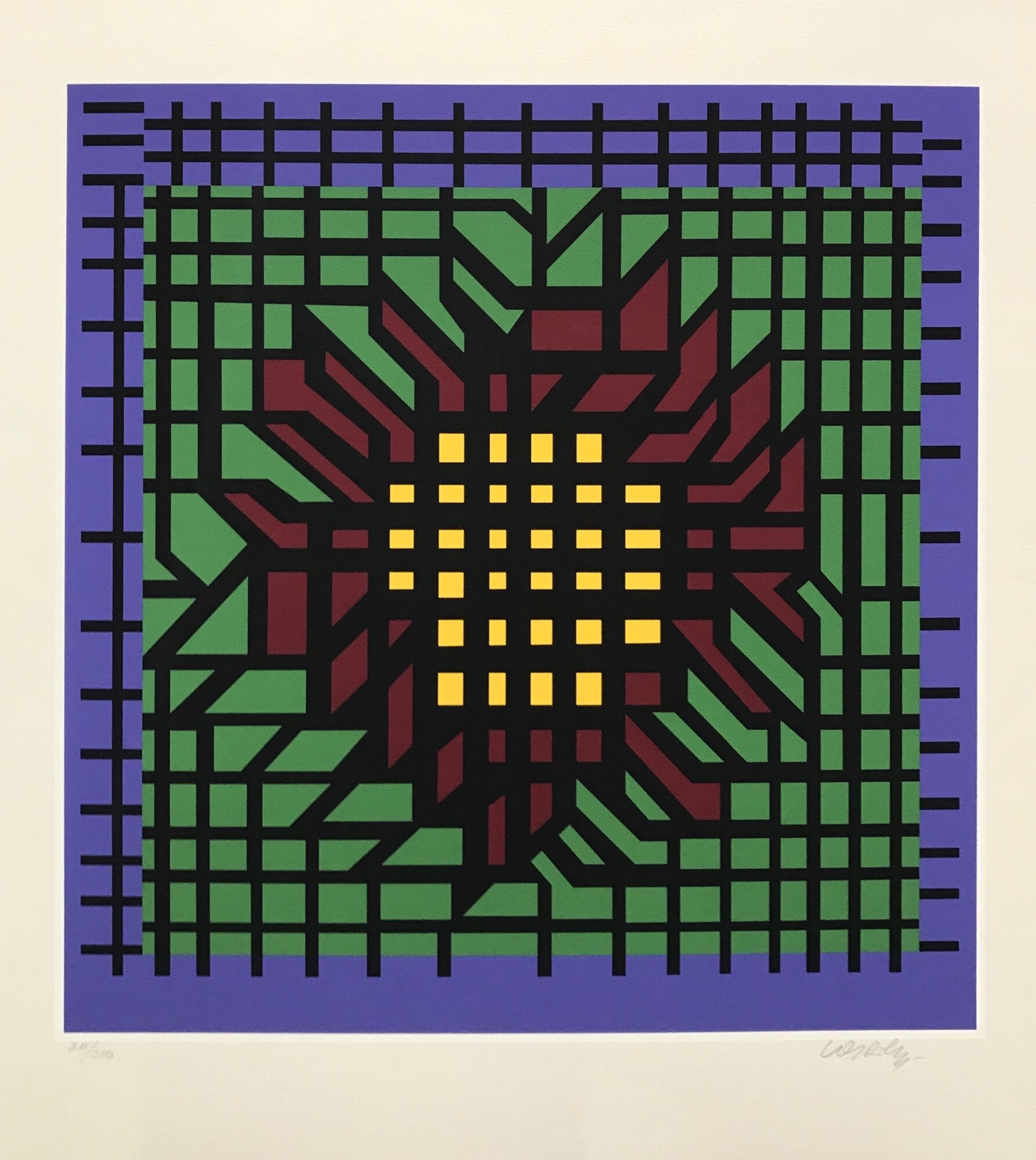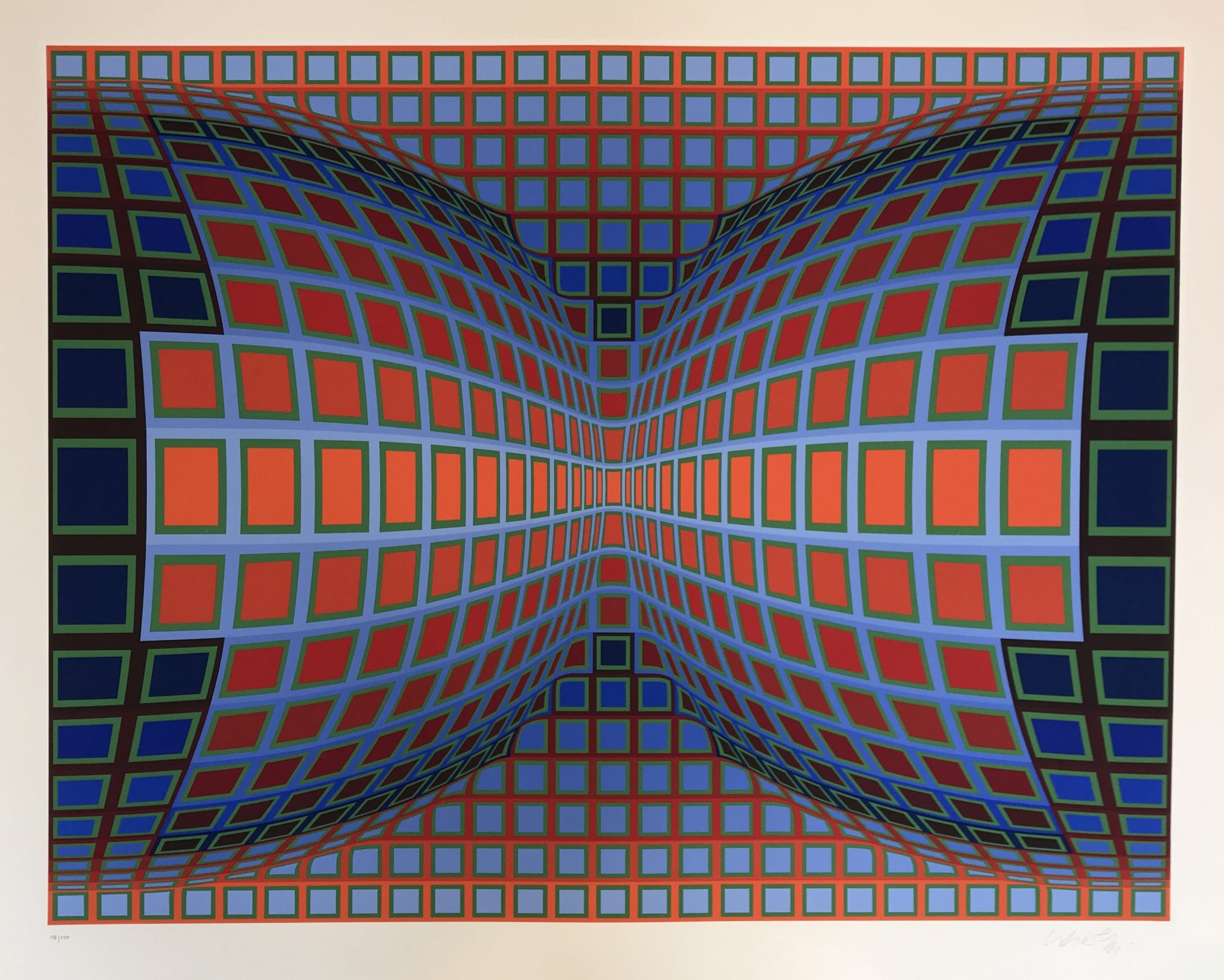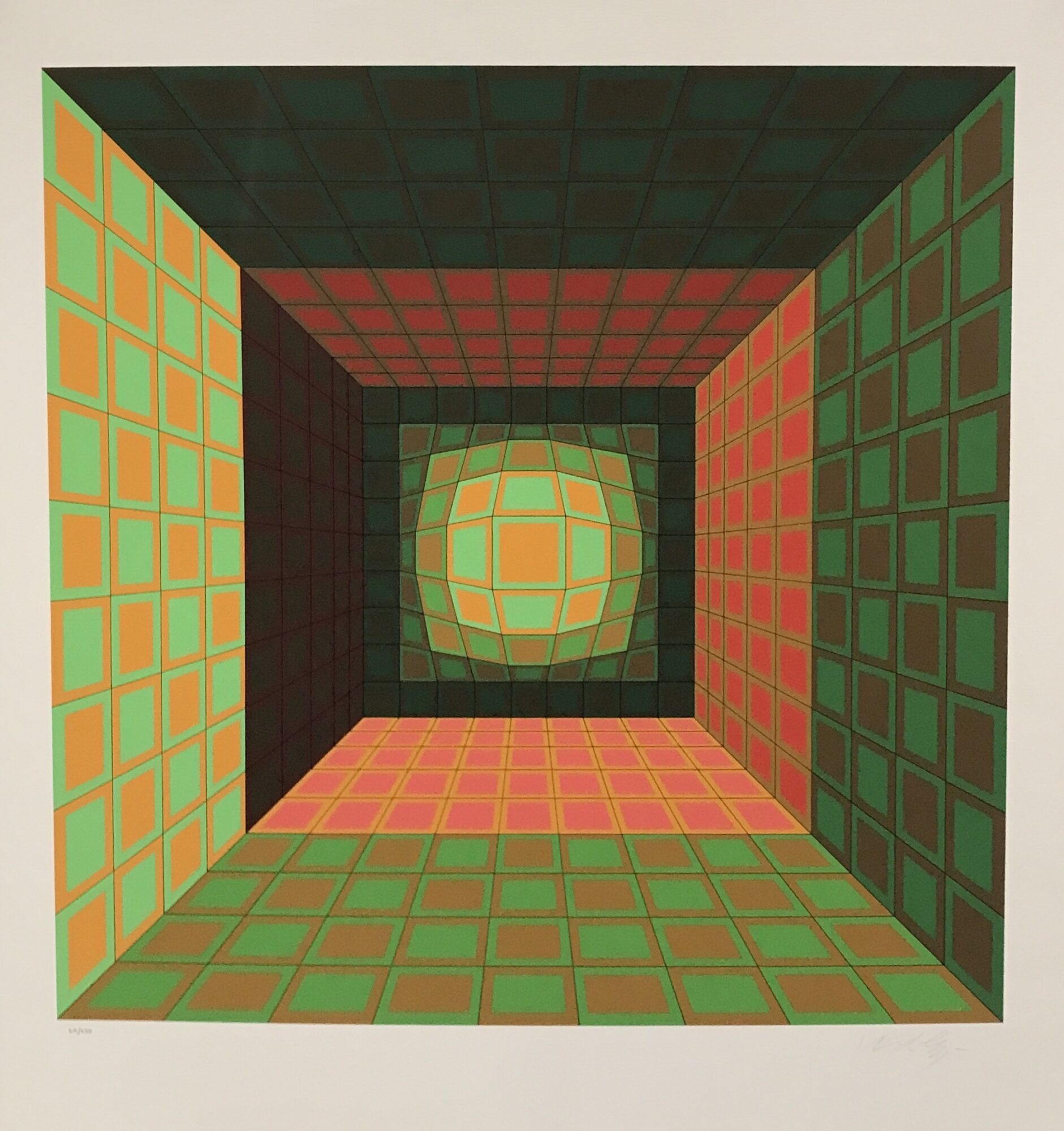Victor Vasarely – Abstract Composition
Victor Vasarely, Abstract Composition (1980) is an original colored serigraph with full paper margins, that is signed and numbered from the edition of 250.
Victor Vasarely was a French-Hungarian artist credited as the father of the Op Art movement. Utilizing geometric shapes and colourful graphics, the artist created compelling illusions of spatial depth, as seen in his work Vega-Nor (1969). Vasarely’s method of painting borrowed from a range of influences, including Bauhaus design principles, Wassily Kandinsky, and Constructivism. Born Vásárhelyi Gyozo on April 9, 1906, in Pécs, Hungary, he briefly studied medicine at the university, but after two years dedicated himself instead to painting. In the late 1920s, Vasarely enrolled at the Muhely Academy in Budapest, where the syllabus was largely based on Walter Gropius’s Bauhaus school in Germany. After settling in Paris in 1930, Vasarely worked as a graphic artist while creating many proto-Op Artworks including Zebra (1937). The artist experimented in a style based on Surrealism and Abstract Expressionism during the 1940s, before arriving at his hallmark checkerboard works. Op Art went on to have a number of practitioners, including Bridget Riley and Yaacov Agam. The artist died at age 90 on March 15, 1997, in Paris, France. His works are presently held in the collections of the Albright-Knox Art Gallery in Buffalo, the Art Institute of Chicago, the Tate Gallery in London, and the Peggy Guggenheim Collection in Venice.
In Abstract Composition, through precise combinations of lines, geometric shapes, colors, and shading, Vasarely creates an eye-popping peice, full of the illusion of depth, movement, and three-dimensionality. More than pleasing tricks for the eye, Vasarely insisted, “pure form and pure color can signify the world.”
| Title | Abstract Composition |
|---|---|
| Medium | Screenprint |
| Year | 1980 |
| Edition | 250 |
| Catalogue Raisonné | NA |
| Signature | Signed |
| Size | 31.5 x 27.5 (in) 80.25 x 70 (cm) |
| Price | Price on Request |
Description
Victor Vasarely, Abstract Composition (1980) is an original colored serigraph with full paper margins, that is signed and numbered from the edition of 250.
Victor Vasarely was a French-Hungarian artist credited as the father of the Op Art movement. Utilizing geometric shapes and colourful graphics, the artist created compelling illusions of spatial depth, as seen in his work Vega-Nor (1969). Vasarely’s method of painting borrowed from a range of influences, including Bauhaus design principles, Wassily Kandinsky, and Constructivism. Born Vásárhelyi Gyozo on April 9, 1906, in Pécs, Hungary, he briefly studied medicine at the university, but after two years dedicated himself instead to painting. In the late 1920s, Vasarely enrolled at the Muhely Academy in Budapest, where the syllabus was largely based on Walter Gropius’s Bauhaus school in Germany. After settling in Paris in 1930, Vasarely worked as a graphic artist while creating many proto-Op Artworks including Zebra (1937). The artist experimented in a style based on Surrealism and Abstract Expressionism during the 1940s, before arriving at his hallmark checkerboard works. Op Art went on to have a number of practitioners, including Bridget Riley and Yaacov Agam. The artist died at age 90 on March 15, 1997, in Paris, France. His works are presently held in the collections of the Albright-Knox Art Gallery in Buffalo, the Art Institute of Chicago, the Tate Gallery in London, and the Peggy Guggenheim Collection in Venice.
In Abstract Composition, through precise combinations of lines, geometric shapes, colors, and shading, Vasarely creates an eye-popping peice, full of the illusion of depth, movement, and three-dimensionality. More than pleasing tricks for the eye, Vasarely insisted, “pure form and pure color can signify the world.”
Additional information
| Title | Abstract Composition |
|---|---|
| Medium | Screenprint |
| Year | 1980 |
| Edition | 250 |
| Catalogue Raisonné | NA |
| Signature | Signed |
| Size | 31.5 x 27.5 (in) 80.25 x 70 (cm) |
| Price | Price on Request |





